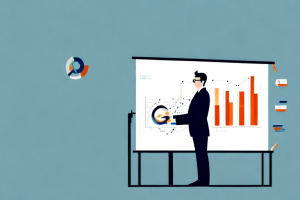Retirement is a significant milestone in one’s life, and financial preparedness is crucial to ensure a comfortable and secure future. Many people wonder if having $100,000 saved up is sufficient to support their retirement needs. In this article, we will explore the various factors that influence retirement planning and evaluate the adequacy of a $100,000 retirement fund. We will also discuss the importance of retirement savings, setting realistic goals, and strategies to maximize your retirement savings.
Understanding the Importance of Retirement Savings
Retirement savings play a vital role in securing your financial future. It is never too early to start saving for retirement, as the power of compound interest allows your money to grow over time. By contributing regularly to a retirement account, you can build a substantial nest egg that will provide financial stability during your golden years. However, the amount needed for a comfortable retirement depends on various factors, including lifestyle expectations, inflation, healthcare costs, and social security benefits.
One important factor to consider when planning for retirement is the expected length of your retirement. With advancements in healthcare and increased life expectancy, it is crucial to ensure that your retirement savings will last throughout your retirement years. It is recommended to consult with a financial advisor to determine the appropriate amount to save based on your desired retirement age and expected lifespan. Additionally, it is important to regularly review and adjust your retirement savings plan as your circumstances and goals change over time.
Evaluating the Adequacy of a $100,000 Retirement Fund
While $100,000 may seem like a substantial amount, it is important to assess its adequacy for retirement. Consider your expected expenses, such as housing, healthcare, food, and leisure activities, and determine how long your retirement savings will last. Additionally, consider the potential impact of inflation on your purchasing power over time. While $100,000 can provide a solid foundation, it may not be enough to sustain a comfortable lifestyle throughout a lengthy retirement.
It is also crucial to take into account any potential unexpected expenses that may arise during retirement. These could include major medical bills, home repairs, or other unforeseen circumstances. Having a contingency plan or emergency fund in place can help mitigate the financial impact of these unexpected events and ensure the longevity of your retirement savings.
Factors to Consider When Planning for Retirement
When planning for retirement, it is essential to take several factors into account. Firstly, consider your desired retirement age and the number of years you expect to live in retirement. This will influence the amount you need to save and how aggressively you should invest. Secondly, evaluate your expected expenses in retirement, such as housing, healthcare, travel, and hobbies. Lastly, factor in the potential income sources you may have during retirement, such as social security benefits, rental income, or part-time work.
Additionally, it is important to consider the impact of inflation on your retirement savings. Over time, the cost of living tends to increase, which means that the purchasing power of your savings may decrease. To account for this, it is advisable to include a buffer in your retirement savings to ensure that you can maintain your desired lifestyle throughout your retirement years.
Setting Realistic Retirement Goals with $100,000
With a $100,000 retirement fund, setting realistic goals becomes crucial. Assess your financial situation and determine what lifestyle you can comfortably afford. It may be necessary to make adjustments to your expectations, such as downsizing your home or cutting back on discretionary expenses. Balancing your desired retirement lifestyle with the resources available is essential for financial security.
Additionally, it is important to consider the potential growth of your retirement fund. Investing a portion of your savings in low-risk, long-term investments can help increase your overall retirement savings over time. Consult with a financial advisor to explore investment options that align with your risk tolerance and long-term goals.
Exploring Different Retirement Scenarios with a $100,000 Nest Egg
While $100,000 may not be enough to fund a traditional retirement, creative planning and alternative scenarios can stretch your retirement dollars further. Explore options such as relocating to a lower-cost area, downsizing your living arrangements, or finding cost-effective healthcare solutions. Additionally, consider part-time work or exploring alternative income sources to supplement your retirement fund and increase your financial security.
Maximizing Your Retirement Savings: Tips and Strategies
Regardless of the size of your retirement fund, there are several strategies you can employ to maximize your savings. Start by maximizing contributions to tax-advantaged accounts such as 401(k)s or IRAs. Take advantage of employer matching programs to boost your savings. Consider diversifying your investments to minimize risk and ensure long-term growth. Regularly review your portfolio and make adjustments as needed. Finally, consult with a financial advisor to help you navigate the complexities of retirement planning and identify additional opportunities to grow your retirement fund.
How Much Money Do You Really Need for a Comfortable Retirement?
The amount of money needed for a comfortable retirement varies for each individual. It depends on factors such as lifestyle expectations, desired retirement age, and expected life span. While $100,000 can provide a solid foundation, it is typically recommended to aim for a retirement fund that covers 70-80% of your pre-retirement income. This will allow you to maintain your standard of living and have a buffer for unexpected expenses.
The Role of Inflation in Retirement Planning: Is $100,000 Enough?
Inflation is an essential consideration in retirement planning. As the cost of living increases over time, the purchasing power of your retirement savings may diminish. While $100,000 may seem significant today, consider how it will hold up against rising prices in the future. To counter the effects of inflation, it is crucial to invest your retirement savings wisely and pursue returns that outpace inflation.
Balancing Social Security Benefits and a $100,000 Retirement Fund
Social Security benefits can be a valuable component of your retirement income. Understanding how Social Security works and how it interacts with your $100,000 retirement fund is essential. Consider your eligibility for benefits and the impact of claiming them early or delaying until full retirement age. Consult with a financial advisor to optimize your Social Security strategy and ensure it aligns with your overall retirement plan.
Investing Your $100,000 for Long-Term Financial Security in Retirement
Investing your $100,000 retirement fund wisely is crucial for long-term financial security. Consider your risk tolerance and time horizon when selecting investments. Diversify your portfolio across asset classes to mitigate risk. Regularly review and rebalance your investments to align with your goals and risk profile. Seek professional advice if needed to ensure your investments align with your retirement objectives.
The Impact of Healthcare Costs on Your Retirement Budget with $100,000
Healthcare costs can be a significant expense during retirement. With a $100,000 retirement fund, it is essential to plan for potential medical expenses. Research healthcare options, including Medicare and supplemental insurance plans, to understand the costs and coverage. Additionally, prioritize a healthy lifestyle and preventive care to reduce the likelihood of significant medical expenses in the future.
Creating a Solid Financial Plan for Your Golden Years with $100,000
Creating a solid financial plan is key to achieving a secure and fulfilling retirement with a $100,000 nest egg. Assess your current financial situation, set realistic goals, and identify the steps needed to achieve them. Build a budget that aligns with your retirement priorities and lifestyle choices. Regularly monitor your progress and make adjustments as needed. Remember, financial planning is an ongoing process that requires regular review and adjustments.
Stretching Your Dollars: Living Frugally in Retirement with a $100,000 Fund
Living frugally can stretch your retirement dollars further and increase your financial security with a $100,000 fund. Aim to minimize expenses by cutting unnecessary costs and prioritizing essentials. Explore opportunities to reduce housing costs, such as downsizing or exploring affordable senior living options. Take advantage of discounts and senior benefits available to you. Adopting a frugal mindset can help you make the most of your retirement savings.
Exploring Alternative Income Sources to Supplement a $100,000 Nest Egg
Supplementing your $100,000 nest egg with alternative income sources can provide additional financial security during retirement. Look for opportunities to generate income, such as part-time work, freelance projects, or starting a small business. Explore your skills and passions to identify income-generating activities that align with your interests. Additionally, consider rental properties or dividend-paying investments as potential income streams.
Adjusting Your Lifestyle Expectations in Light of a $100,000 Retirement Fund
With a $100,000 retirement fund, it may be necessary to adjust your lifestyle expectations to ensure financial security. Assess your spending habits and consider areas where you can cut back or make more cost-effective choices. Prioritize experiences and activities that bring you joy without breaking the bank. With careful planning and an adaptable mindset, you can create a fulfilling retirement lifestyle within your financial means.
Avoiding Common Mistakes When Managing a $100,000 Retirement Portfolio
Managing a $100,000 retirement portfolio requires careful consideration and avoidance of common pitfalls. Avoid emotional investment decisions and seek professional advice when needed. Don’t overlook the impact of fees on your portfolio’s long-term growth. Plan for potential market fluctuations and make sure your investments align with your risk tolerance. Stay informed and regularly review your retirement portfolio to ensure it remains on track.
Seeking Professional Advice: Consulting with Financial Planners on a $100,000 Budget
Seeking professional advice from a financial planner can be beneficial when managing a $100,000 retirement budget. A financial planner can help you assess your financial goals, design a comprehensive retirement plan, and make recommendations on investment strategies. They can also provide guidance on tax implications and estate planning. Choose a financial planner with expertise in retirement planning and a fiduciary duty to act in your best interest.
The Pros and Cons of Early Retirement with a $100,000 Savings Cushion
Early retirement can be an enticing prospect, but it comes with its own set of considerations when you have a $100,000 savings cushion. Assess the impact of retiring early on your retirement savings and whether it allows for sustainable income throughout your lifetime. Consider healthcare costs and the potential need for supplemental coverage before you are eligible for Medicare. Evaluate the trade-offs of leaving the workforce early and ensure you have a solid plan to support your lifestyle and financial needs.
Navigating the Emotional Challenges of Retiring with Only $100,000
Retiring with only $100,000 can bring about a range of emotional challenges. It is essential to manage expectations and approach retirement with a positive mindset. Focus on the opportunities for personal growth, leisure activities, and spending time with loved ones that retirement provides. Seek support from friends, family, or professionals to navigate any anxiety or uncertainty you may experience. Remember, with proper planning and financial management, a fulfilling retirement is achievable, regardless of the size of your retirement fund.
In conclusion, while $100,000 can provide a foundation for retirement, it is crucial to consider the various factors that influence retirement planning. Assessing your lifestyle expectations, anticipated expenses, and potential income sources is vital to ensure a secure and comfortable retirement. By setting realistic goals, maximizing your retirement savings, and exploring alternative strategies, you can make the most of your $100,000 retirement fund and enjoy your golden years to the fullest.



